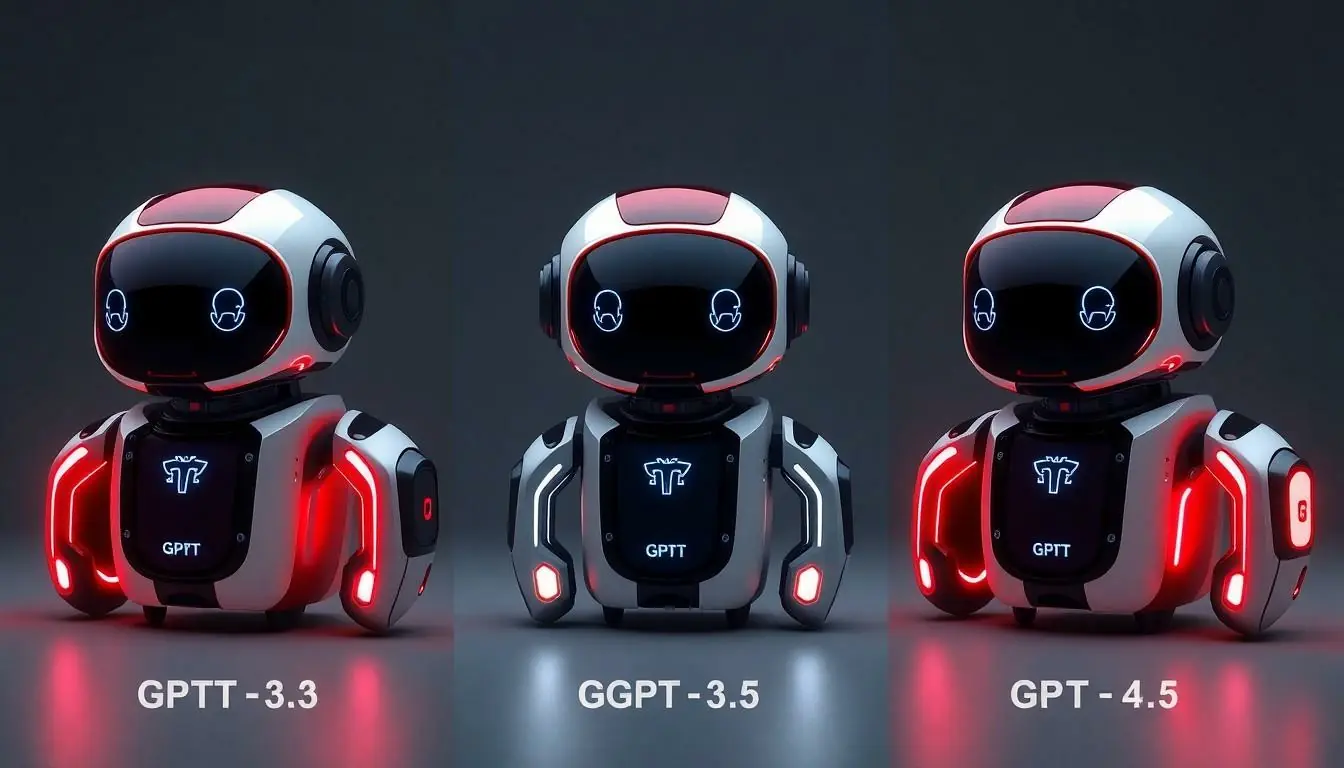In the ever-evolving world of AI, ChatGPT stands out like a unicorn at a horse race. With various models to choose from, it’s easy to feel like a kid in a candy store, overwhelmed by options. But fear not! Finding the best model isn’t just a quest for tech-savvy wizards; it’s a delightful journey for anyone curious about the magic of conversation.
Each model has its quirks and charms, much like a sitcom cast. Some are quick-witted, while others are more thoughtful and introspective. The question isn’t just what’s available, but which model suits individual needs best. Dive in as we explore the ins and outs of ChatGPT, helping you uncover the perfect conversational partner for your unique adventures.
Table of Contents
ToggleOverview of ChatGPT Models
ChatGPT represents a significant evolution in AI-driven conversational models. Various models emerged, each tailored to specific applications and audiences.
Historical Development of ChatGPT
ChatGPT’s inception began with early research on natural language processing in the 2010s. The model transitioned from basic implementations to its advanced versions, showcasing improvements at each stage. In 2020, OpenAI unveiled the first iteration of ChatGPT, which sparked widespread interest. Subsequent versions enhanced capabilities, particularly in contextual understanding and response generation. Innovations continued with fine-tuning techniques and user feedback, leading to the current models that users engage with.
Key Features of ChatGPT Models
ChatGPT models exhibit several key features that set them apart. Context retention allows users to engage in more meaningful and prolonged conversations. Multi-turn dialogue capabilities improve interactivity during discussions. Fine-tuning leads to higher accuracy and relevance in responses, which enhances user satisfaction. Versatility in handling various topics broadens the model’s utility. Additionally, safety measures are in place to minimize harmful outputs, contributing to responsible AI usage.
Comparison of ChatGPT Models

ChatGPT models showcase distinct improvements across iterations. Each version enhances capabilities, providing users with different options to suit their needs.
GPT-3 vs. GPT-3.5
GPT-3 introduced powerful natural language processing features but had limitations in contextual understanding. Users experienced challenges with incomplete responses in lengthy conversations. GPT-3.5 built upon this foundation, offering refined conversational abilities. It enhances contextual awareness, allowing for smoother dialogues across multiple turns. The introduction of better fine-tuning techniques increased the relevance of responses significantly. Users noticed that GPT-3.5 produced more accurate and coherent information than its predecessor. This improvement made it a preferred choice for many looking for reliable conversational AI.
GPT-3.5 vs. GPT-4
GPT-4 represents a significant leap in performance compared to GPT-3.5. Enhanced capabilities allow it to interpret broader contexts and generate greater nuance in responses. Users appreciate its advanced reasoning skills, making it more effective in complex topics. Variability in output styles also improves, allowing personalization for user preferences. With a larger training dataset and improved algorithms, GPT-4 reduces errors, increasing overall trustworthiness. Many users find GPT-4 indispensable for professional and creative applications, setting new standards for conversational AI.
Performance Evaluation
Evaluating ChatGPT’s performance involves analyzing accuracy, relevance, response time, and usability. These aspects significantly affect user experience and model effectiveness.
Accuracy and Relevance
ChatGPT models demonstrate impressive accuracy and relevance in responses. Each iteration incorporates advancements that enhance contextual understanding. GPT-3 struggled with maintaining coherence across long exchanges, while GPT-3.5 made strides in this area, delivering more precise answers. GPT-4 elevates this further, offering responses that align closely with user intent. Increased training on diverse datasets contributes to these improvements, ensuring that the model provides reliable information across topics. Users benefit from the incorporation of real-world knowledge, resulting in interactions that feel both natural and informed.
Response Time and Usability
Response time remains crucial for an effective user experience. ChatGPT models consistently perform with reduced latency, allowing for smooth conversations. GPT-3.5 introduced optimizations that lessened response delays, enhancing usability significantly. In contrast, GPT-4 has refined this even more, ensuring that responses come quickly without sacrificing quality. Usability also involves intuitive interfaces that accommodate varying levels of user expertise. Many users find the design straightforward, encouraging exploration and interaction. This blend of quick responses and user-friendly interfaces contributes to ChatGPT’s reputation as a leader in conversational AI.
User Experience
User experience plays a pivotal role in determining the best ChatGPT model. Feedback from users indicates strong preferences based on functionality, ease of use, and capabilities.
Feedback from Users
Users often praise ChatGPT for its conversational flow and coherence. Many appreciate GPT-4 for its contextual awareness, resulting in answers that align more closely with expectations. Experiences shared highlight reduced misunderstandings compared to previous models. Additionally, users have noted improved interaction quality across multi-turn dialogues. Complaints about response delays are less frequent with GPT-4, as speed has seen measurable enhancements. Overall, satisfaction rates continue to rise, proving the importance of user input in refining AI models.
Application in Various Fields
ChatGPT finds applications across diverse fields such as education, healthcare, and customer service. In education, students utilize it for instant explanations and personalized tutoring. Healthcare professionals rely on it for quick access to medical information and patient interaction simulations. Companies integrate ChatGPT into customer service platforms to enhance user engagement with prompt replies. Each sector benefits from tailored interactions that meet specific needs. Furthermore, the versatility shown across various industries demonstrates ChatGPT’s capability to adapt to different user requirements, reinforcing its position as a leading conversational AI model.
Choosing the best ChatGPT model ultimately depends on individual needs and preferences. Each iteration offers unique strengths that cater to various applications and user experiences. Whether it’s the enhanced contextual understanding of GPT-4 or the refined capabilities of GPT-3.5, users have the opportunity to find a model that suits their requirements perfectly. As advancements continue to shape the future of conversational AI, exploring these options will empower users to leverage ChatGPT’s potential effectively. Embracing this journey not only enhances interactions but also fosters a deeper understanding of AI’s evolving landscape.





